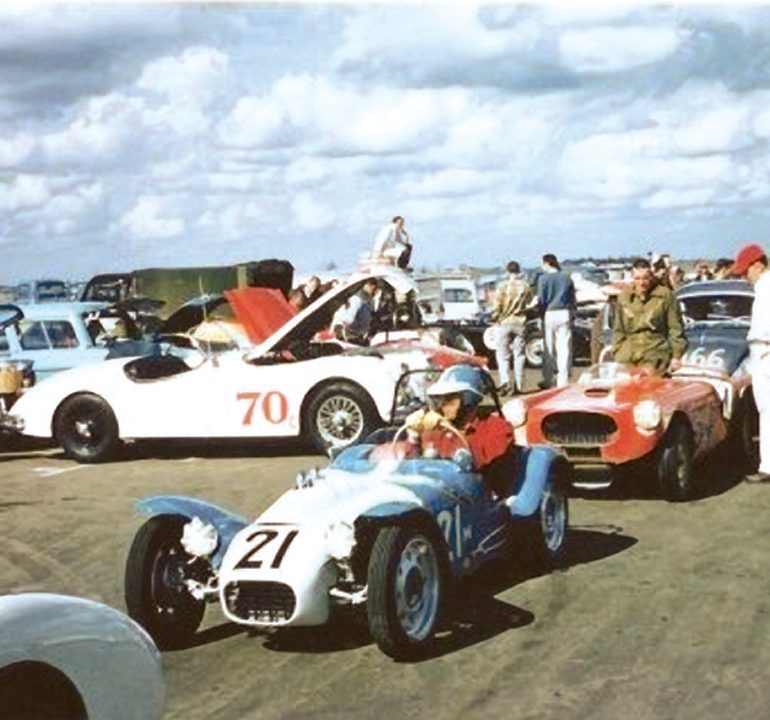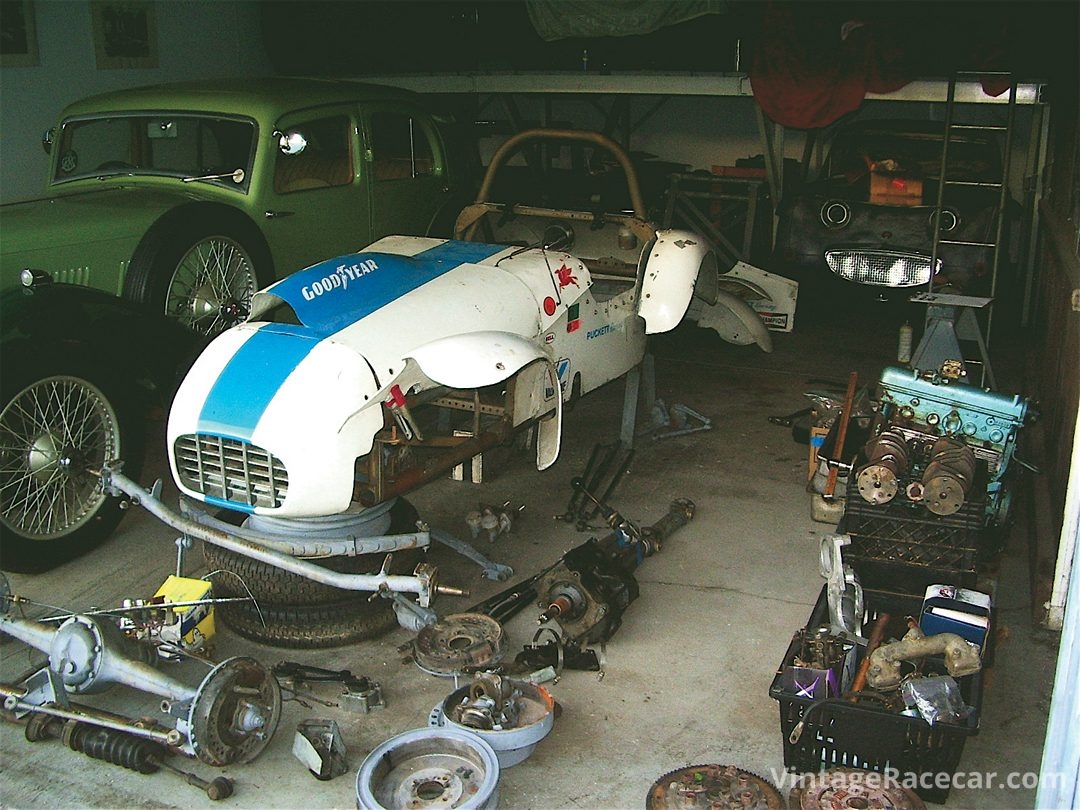An All-Out 750-cc Racing Weapon
Much like the animal it was named for, the precise origin of the Unicorn H-Modified sports racer remains a mystery. Legend has it that the car was built in or around San Francisco in 1952 by a police officer. However, years and years of research by subsequent owners have failed to uncover the builder’s identity or absolutely confirm his profession. As the tale is told, the constructor sold or traded the car shortly after finishing it. Some have speculated that a wicked girlfriend cast an evil spell causing him to turn against the four-wheeled creature. Others have said that the beast vanished in the middle of the night. What seems certain is that no one knows for sure.
The Unicorn was built on a mild steel, round-tube chassis as an all-out 750-cc racing weapon. The car rode on 1937 Simca-Fiat components with Topolino drum brakes front and back. Power came from a Crosley four-cylinder with speed equipment from specialist Nick Brajevich. The engine breathed through twin Tillotson carburetors on a “Braje” intake manifold. The side cover and oil pan were also from Brajevich’s shop. The four-speed gearbox was from a Fiat Topolino. The body was a tidy package of all aluminum construction with clam-shell fenders up front. The original paint scheme was blue with a white stripe, although this color pattern was reversed at some later point in the Unicorn’s long life.
At some time, the car was subjected to a “Validation Study” which was performed by Brajevich, Jarl de Boer, and Willie Mueller for the H-MOD Group. According to the study, the car was raced at Santa Barbara and Stockton in the mid-fifties. It also competed at the November 1957 Pebble Beach Road Races at Laguna Seca. Driven by Marshall Swope in the under-1500-cc race, the Unicorn finished 20th overall and 7th in class. At the time, the car was owned by John Miller.
Over the years the car passed through several owners including John Murphy, Joe Puckett, de Boer, Mike Nichels, Jim Jessup, Rob Phillips, and Chip Starr. Starr runs a one-man restoration shop (Race Car Resurrections) and bought the Unicorn from Phillips in 2008, with the plan of refurbishing it for his personal collection. The fourth quarter ’08 world financial implosion, coupled with not enough space and time, led Starr to list the car on www.bringatrailer.com. For those unfamiliar, this web site is worth a serious visit.
I saw the Unicorn for sale on the site and was interested in adding it to my own collection, but I was too late. As I later learned, the car had been quickly snatched up by Bay Area racer Dick Duncan. Duncan started racing in Southern California in the early sixties with a Bugeye Sprite. Duncan raced the same car for ten years and quit in 1972. In 1988, he bought a small English car and raced it at Bay Area vintage events before deciding that it did not fit his 6’1” frame. So he had been looking for another car to vintage race, when he spotted the fabled Unicorn on Bringatrailer.
“The thing that I can do well that I’ve done with a number of other racecars is that I can buy them in boxes and get them back together.”
According to Duncan, “I discovered the site a year ago and it’s a great thing. They always have some good cars and they seem to manage to make the site interesting. I get an email from them every morning with postings for new cars. When I saw the Unicorn for sale, I got real excited. My racing started in the Bay Area a long time ago, and I liked the idea that the car was built locally. I also have another car at the other end of the spectrum—a 1966 USRRC car that I’m restoring that was also built in the Bay Area. At 70, I figure I’d better get that car restored before I’m too old to drive it. After that, I’ll fix up the Unicorn and race that one.”
Duncan prefers to buy projects and, by his own account, the Unicorn is in need of some serious attention. He said, “The thing that I can do well that I’ve done with a number of other racecars is that I can buy them in boxes and get them back together.”
Along with the car and boxes of parts, Duncan received a number of period photographs and a copy of the Validation Study. According to this document, “John Murphy said this car was seen by Colin Chapman in the fifties and was rumored to have influenced the Lotus Mk 6.”
Sounds like another myth, but only Chapman knows for sure and, unfortunately, he’s not talking.





